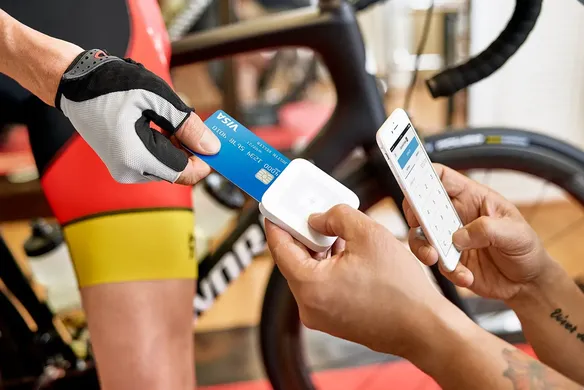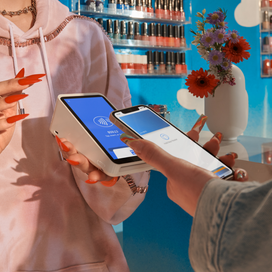Table of contents
The way we consume is rapidly changing — Australia Post’s annual ecommerce report predicts that one in ten items will be purchased online by 2020. What’s more, it showed that one in five online purchases in 2017 were made on a mobile device. When you couple these figures with the $21.3 billion Australians spent online last year (up 18.7% on the year before) it’s becoming increasingly more important for business of all sizes to be looking online.
That doesn’t mean, however, that when starting a business you should completely shun all traditional channels of selling. As society becomes increasingly digital, we know it’s all too easy for business founders to get caught up in the online world. No, we’re talking about carefully planning and taking advantage of opportunities that can help set your startup or retail business apart: omnichannel selling — aka selling through every available channel.
Thankfully, accepting card payments (whether that’s online or in-person) has never been easier. Here are the top things you need to consider as you build your omnichannel payment strategy.
Consumers love mobile — is your website is ready?
As the stats above show, the shift to mobile shopping is only going to accelerate. Make sure your customers have the option to make a purchase on their own terms. Whether that’s through your social feeds with the likes of Instagram shopping, via an ecommerce platform on your website or even by paying over the phone. When you’re putting your website together make sure that it is optimised for mobile — that means testing it on tablets and smartphones as well as on your PC. If your customers can’t make the purchase they want on your website because it doesn’t work on mobile then that could well be a sale you miss altogether.
Taking payments on your website doesn’t have to be difficult
Whether you’re a seasoned web developer or just starting out with your first website, getting set up to take payments online has never been easier. Many out of the box website builders like Wix, Weebly and BigCommerce can have you up and running without too much hassle.
If you’re looking for a more advanced ecommerce solution (and have the tech skills to match) the likes of WooCommerce or Magento are great solutions. And if you want to go all out and build custom payments forms into your existing website Square’s APIs allow you to do just that.
Keep it flexible
Australia Post’s research shows that consumers increasingly expect flexibility when it comes to getting their hands on their purchase. While some may like their items delivered, others may like to purchase online and collect in-store.
For higher value items, consumers may prefer to come down to a brick-and-mortar location to check out your products before purchasing online later. Consider handing out business cards or flyers with discount codes to make sure that they follow through with the purchase. Gift cards are also a great solution, especially during the holiday shopping season.
Take it offline
While there is no doubt that eCommerce is booming, retail outlets are still where the majority of Australians are doing their shopping — and one in three are now card-only shoppers. Square is a great solution for taking payments offline with our affordable card reader, and our free POS platform allows you to see all of your sales (made online or in-store) in real-time.
What to look for in a payments partner
- Fast transfers
When you’re building a business from scratch, you need to know that you’re going to get paid fast to help you manage your critically important cash flow. - Omnichannel payment capability
With consumers wanting the flexibility to pay online, in-person or even via their social media feeds, having a payments partner that can handle card payments wherever your customer is looking to purchase is essential. - Reporting and analytics
As your business grows, having a consolidated view of all of your sales data in one place is important to make your business more efficient and save you time. - App integrations
These days you can manage everything from accounting to employees and inventory with apps and technology partners. Look for a payments partner with a solid App Marketplace so that you can ensure all your business needs are met.
![]()











